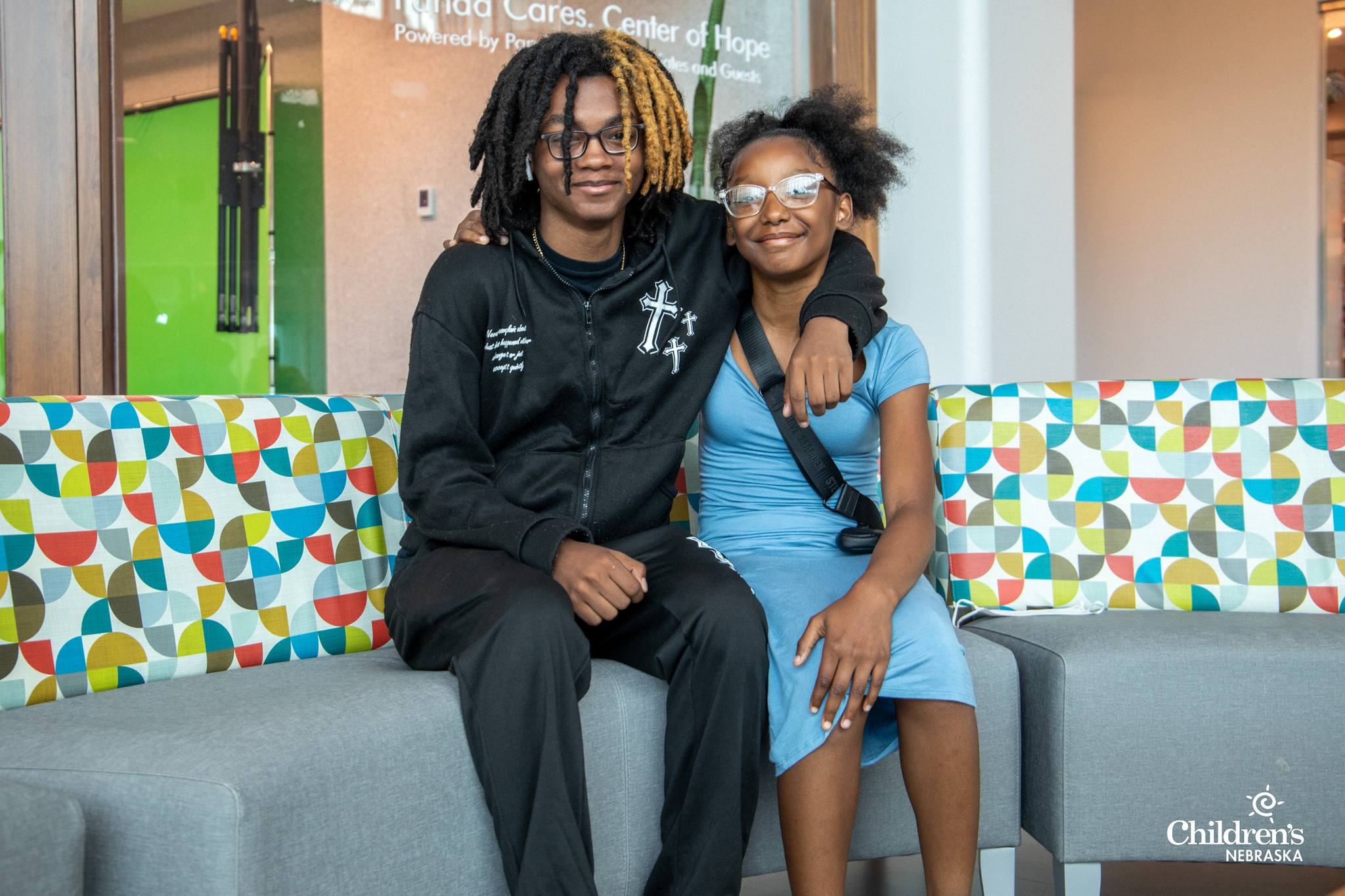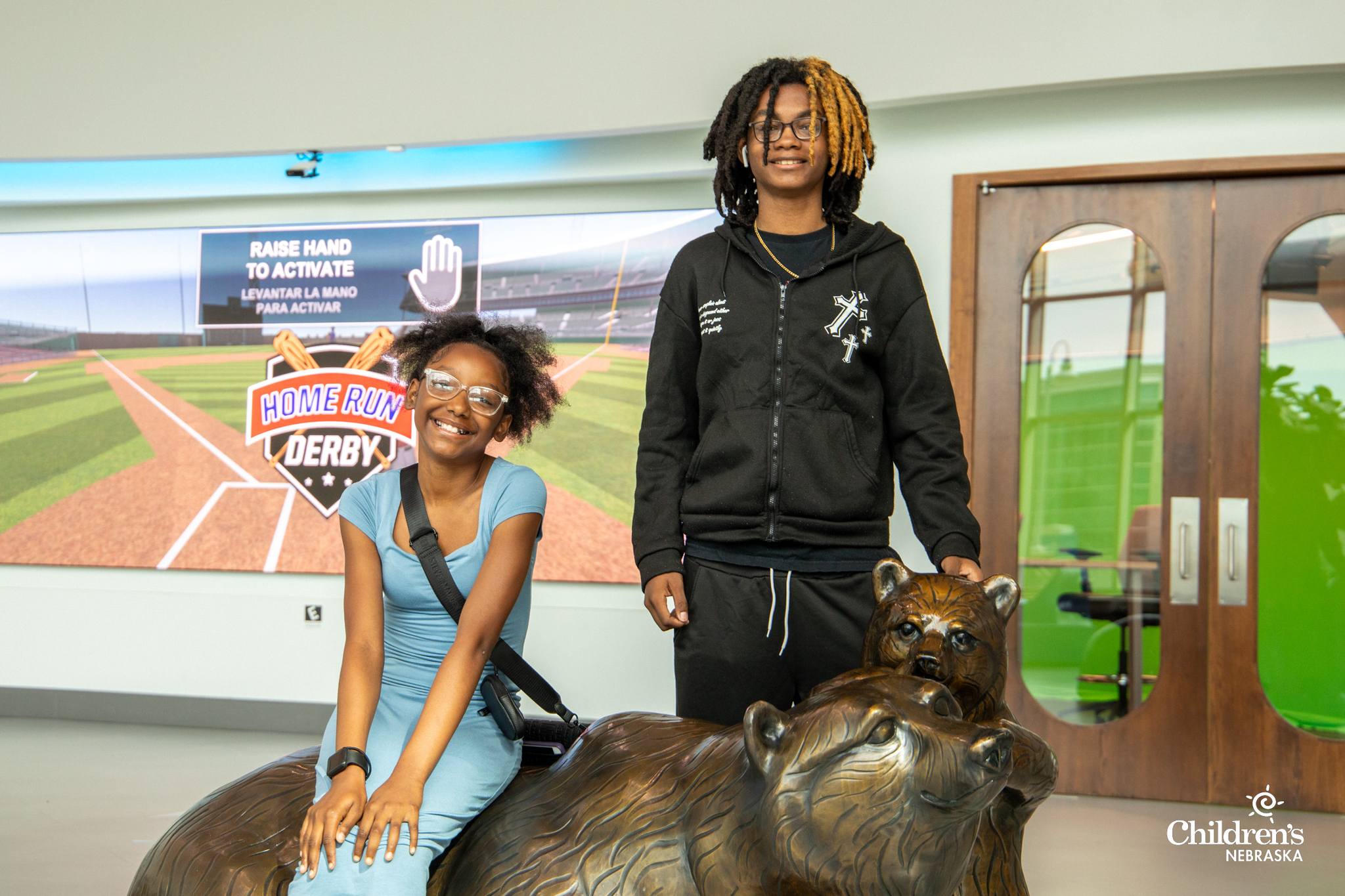The Unbreakable Bond of Two Siblings Living with Sickle Cell


Growing up with sickle cell disease (SCD) means navigating a complex journey marked by resilience. As children with SCD mature, they face new physical and emotional challenges, including the increasing complications of the disease and the significant shift in their healthcare needs.
“Sickle cell is a congenital disease, meaning you’re born with it, and as you go through life, more complications begin to pile up. Teenagers are no exception. They face issues related to cumulative lung and brain complications,” Dr. James L. Harper, hematology/oncology specialist at Children’s Nebraska says.
For A’Niyah and Solomon, growing up with SCD has meant learning to live with unpredictable pain crises and managing their health while still pursuing their dreams.
BlackDoctor.org sat down with A’Niyah, Solomon, their mother, and their longtime physician, Dr. Harper, to explore how their early challenges with sickle cell diagnosis have paved the way for their involvement in a specialized program designed to help them thrive as they transition into adulthood.
Early Struggles and Family Support
Growing up with sickle cell presented unique challenges for A’Niyah and Solomon. Both recall how difficult it was in the beginning, before they had access to the medications that now help manage their condition.
“At first it was pretty hard because we didn’t have the right medications and treatments available. We really had to support each other and just get through it together. It was difficult, but eventually, we got through it,” Solomon shares.
Their mother, who had no prior knowledge of sickle cell before her children’s diagnosis, describes the difficulty of learning about the disease while caring for her children.
“When I first found out, I didn’t know what sickle cell was. They didn’t explain it to me until after I gave birth. They gave me a booklet about it, but honestly, I had to learn as I went, alongside my children. It was really hard at first,” she adds.
Although seeing her children struggle was painful, they got through the challenges as a family.
“I knew we had to go through it, and over time, it got a little easier,” she says.
A Sibling Bond
A key part of A’Niyah and Solomon’s strength has been their ability to rely on each other.
“I would say the hardest part was getting around and trying to move or get something to eat. Sometimes I’d try to get up, walk, or use my arms, and most of the time, the pain would be in my arms or legs. Sometimes even my back, so it’d be hard to walk or use my arms. It was really painful,” A’Niyah shares.
The Role of Medical Support
Dr. Harper has seen A’Niyah and Solomon’s growth from early childhood into their teenage years.
“Solomon is the oldest, and A’Niyah is his little sister. They used to have the usual pain events and would come into the hospital once or twice a year. However, since starting hydroxyurea and taking their health more seriously, their hospital visits have decreased significantly. It’s been almost a year since A’Niyah was admitted, and that was for a splenic issue, not a pain crisis. Their frequency of admissions has decreased as they’ve taken better care of themselves,” Dr. Harper shares.
Dr. Harper notes that consistent use of hydroxyurea can sometimes be a challenge for young patients. “They’ve had issues with taking it regularly, which is common,” he says, but lightheartedly adds that a sibling competition between Solomon and A’Niyah over who had better lab results helped keep them both on track.

Managing Pain and Chronic Conditions
One of the most significant challenges for individuals living with sickle cell is managing pain. Dr. Harper notes how pain in sickle cell can feel like “having a little heart attack in your arm or leg” due to blood vessels being blocked.
“Over time, this damage can cause nerve changes, leading to chronic pain. Many of our patients begin to experience this type of pain, which can be difficult to manage as they get older,” he explains.
Additionally, many children with sickle cell disease have to manage asthma as well. The combination of asthma and SCD exacerbates both conditions, which makes managing physical activities more difficult.
Despite these hurdles, both A’Niyah and Solomon continue to stay active and engaged in sports, a testament to their resilience and determination.
“I still do things I like to do, like being active and playing sports. Since I’m taking medicine, I don’t have crises that often. So, I can still manage my life, go to school, and do things at school. I also sometimes work a job. It’s not too difficult as long as I have my medicine,” Solomon shares.
A’niyah has also learned how to prioritze her health while remaining active.
“Sometimes I know I don’t want to get sick, so I take my medicine. But sometimes, even with the medicine, it doesn’t help as much, especially when I’m doing a lot. So sometimes I end up having a crisis. But since I’ve been managing it better, I haven’t had as many crises lately,” A’Niyah adds.
Thanks to the support of their parents and medical team, A’Niyah and Solomon have made significant progress.
“I’m proud of A’Niyah because she continues to do what she wants to do. She’s into track, volleyball, basketball, and dance. What makes me so proud is that she’s doing it, not letting this slow her down. Even though this is something she’ll live with for the rest of her life, it makes me proud that she’s spreading awareness to other kids and adults who have the same condition,” their mom shares. “And for Solomon, even though he has more restrictions with sports, he doesn’t give up. He finds what he can tolerate, and I’m fine with that. I support my kids in whatever they want to do.”
Transitioning to Adulthood
As teenagers with SCD, A’Niyah and Solomon are preparing to transition from pediatric to adult healthcare.
A critical part of this preparation is the Transition to Adult Care Program that A’Niyah and Solomon are part of.
“Transitioning to adult medical care is a big challenge for people with chronic diseases like sickle cell. We use a formal transition program, which starts when kids are around 12 years old. It involves teaching them about their disease, how they’re managed, and how to take an active role in their care—like knowing their medications, which pharmacy they use, and how to communicate their needs effectively. This is important because as they become adults, they’ll need to manage these things on their own,” Dr. Harper shares.
This preparation aims to reduce the health complications that tend to increase in the early 20s for individuals with lifelong conditions like sickle cell. “With proper transition training, we can reduce that impact, and patients tend to fare better,” Dr. Harper notes.
“The team has been very supportive. They’ve helped with a lot, especially things outside the clinic,” A’Niyah says. They help me stay on top of my grades and keep my horizons open, like what jobs I want to do when I get older, even with my crises.”
“They also teach us more about sickle cell. We didn’t really start learning about it until two years ago, so they’ve taught us about that,” Solomon adds.
Looking to the Future
Despite the challenges of sickle cell, both A’Niyah and Solomon remain optimistic about their futures. A’Niyah hopes to pursue a dance career, open her own studio, or possibly become a pilot—though she acknowledges that flying might not be ideal given the potential complications with her condition. “The doctor said the altitude might trigger a crisis,” A’Niyah explains, “but I’d still like to look into it.”
Solomon is interested in working with children. “I want to look into a childcare job, to help kids who may not know what’s going on with their health. I’d like to teach them about what they can and can’t do, and maybe help them understand their conditions better,” he shares.
Their mother beams with pride when talking about their aspirations.
“It’s been a challenge, but as they’ve gotten older, it’s gotten a lot better. I always try to encourage them that they can do whatever they want to do, and not let this stop them or slow them down. It kind of limits what they can do sometimes, but I keep pushing them to be the best they can be. If they didn’t have each other, I don’t know how it would’ve been, but having each other has made it a lot easier because they can lean on one another,” she adds.
Advice for Teens with Sickle Cell
- Be aware of your disease. “It is important for teens with sickle cell to be aware of their disease and the patterns of their pain. If a teen frequently experiences arm or leg pain, they should know when it feels like a typical pain crisis and when it’s different,” Dr. Harper advises.
- Understand your medication. “Basic things like understanding their medications and knowing which pharmacy they use can be really helpful,” Dr. Harper shares.
- Know how to advocate for yourself. “It’s important for them to be able to communicate clearly about their pain and care, like saying, “I have sickle cell, and my leg pain today is the same as it was during my last crisis,” and explaining which medications help or don’t,” Dr. Harper adds.
- Work with an adult care team. “Pediatric sickle cell patients tend to be a high priority in the emergency room, but when they transition to adult care, that changes. They might no longer be at the top of the triage list, especially if there’s a car accident, a gunshot wound, or a heart attack being treated at the same time. Some of our internal medicine hematologists are creating infusion programs to help adults with sickle cell avoid the emergency room by managing pain in outpatient settings, which ensures they still receive high-priority care,” Dr. Harper notes.
To learn more about transitioning from pediatric care to adulthood, visit Got Transition.




